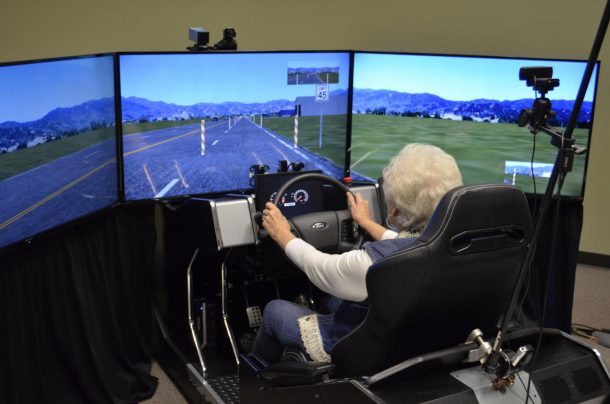
A study designed to monitor and measure stress levels of drivers has uncovered evidence showing why texting can be so dangerous, while moderate levels of other driver distractions — like being upset or absent minded — triggers the brain’s “sixth sense” to help protect the driver.
The Texas A&M Transportation Institute (TTI) leads the three-year project, partnering with other experts from the Texas A&M Dwight Look College of Engineering, the University of Houston Computational Physiology Laboratory and The University of Michigan Transportation Research Institute. The project is funded by the Toyota Economic Loss Settlement — money which has been set aside for transportation safety research.
“The driver’s mind can wander and his or her feelings may boil, but a sixth sense keeps a person safe — at least in terms of veering off course,” says Ioannis Pavlidis, director of the University of Houston’s Computational Physiology Lab. “What makes texting so dangerous is that it wreaks havoc on this sixth sense.”
To detect and measure stress levels, researchers studied 59 volunteer drivers who wore a heart rate monitor, a skin conductance device and were videotaped by a thermal imaging camera. The volunteers drove the same driver simulation course four times under different scenarios — under normal conditions, while distracted with cognitively challenging questions, while distracted with emotionally charged questions and while preoccupied with trivial texting tasks.
In each intervention, the drivers became stressed and jittery. However, absent-minded and emotionally charged distracted drivers were able to stay on course and in their lanes, while texting drivers could not.
“A likely explanation for this paradox is the function performed by a part of the brain called the anterior cingulate cortex, or ACC,” Pavlidis says. “ACC is known to automatically intervene as an error corrector, instantly counterbalancing jitters in this case.” He explains that for ACC to perform this corrective function, it needs support from the driver’s eye-hand coordination loop. If the loop breaks, as it does when the driver texts, then ACC fails, resulting in a significant lane deviation.
All three research partners will continue the project with other stress tests of drivers in an instrumented vehicle on an actual course at the RELLIS Campus.
“It’s well known that high levels of stress can contribute to driver error by slowing reaction time, so alerting a stressed driver of that condition has the potential of improving safety,” says Mike Manser, manager of TTI’s Human Factors Program.
As part of the research, the team is developing sensors that are able to detect not only stress levels of drivers, but also vehicle errors — like unintended acceleration — another potential crash factor.
“We are pleased to work with TTI researchers on a meaningful and potentially high impact project,” says Reza Langari, Head of the Engineering Technology and Industrial Distribution Department at Texas A&M. “The work brings together expertise in vehicle dynamics, human factors, machine learning and decision analysis to address an important problem in transportation safety — detection of abnormal driving conditions.”
The ultimate goal of the project, in year three, is the development of a countermeasure that alerts the driver to abnormal conditions — either with the vehicle or the driver.
“We envision a time in the near future when these systems can be installed in a vehicle,” Manser says.